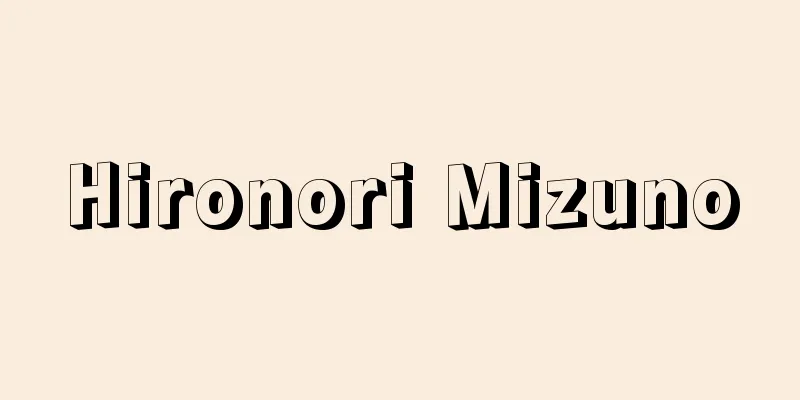Katsurada Fujiro - Katsurada Fujiro

|
Pathologist. Born in Daishoji, Kaga Province (Kaga City, Ishikawa Prefecture). Graduated from Ishikawa Prefectural Medical School in 1887 (Meiji 20), he became a research student in the Department of Pathology at the Imperial University Medical School in the same year. In 1890, he became a professor at the Third Higher School of Medicine in Okayama (later Okayama Medical College, the forerunner of Okayama University's Faculty of Medicine), where he was in charge of the pathology course. There, he began researching schistosoma, which was rampant in the region at the time. In 1899, he went to study in Germany, where he studied under Aschoff at the University of Freiburg, and after returning to Japan, he became a doctor of medicine in 1902 (Meiji 35). In 1904, he discovered the Japanese liver fluke, and thereafter researched the causes and prevention of the disease. He retired from Okayama Medical College in 1912, attended the International Medical Association Congress held in London in 1913 (Taisho 2), and became the director of Settsu Hospital and the Seafarers' Tropical Diseases Research Institute, which were established in Kobe in 1914. In 1918, together with Fujinami Akira of Kyoto Imperial University, he received the Imperial Academy Prize for "research on Japanese schistosomiasis." After the hospital and research institute were burned down during World War II, he continued his research in his hometown. [Otori Ranzaburo] [Reference items] | | |Source: Shogakukan Encyclopedia Nipponica About Encyclopedia Nipponica Information | Legend |
|
病理学者。加賀国大聖寺(石川県加賀市)の生まれ。1887年(明治20)石川県立医学校を卒業、同年、帝国大学医科大学病理学教室研究生となる。1890年、岡山の第三高等中学医学部(後の岡山医学専門学校、岡山大学医学部の前身)教授となり、病理学講座を担当した。ここで当時、同地方に蔓延(まんえん)していたジストマ病の研究を始めた。1899年ドイツに留学し、フライブルク大学でアショフに師事、帰国後、1902年(明治35)医学博士となる。1904年日本住血吸虫を発見し、以後、同病の原因や予防法を研究した。1912年岡山医学専門学校を退き、1913年(大正2)ロンドンで開かれた万国医学会会議に出席、1914年神戸市に設けられた摂津(せっつ)病院と船員熱帯病研究所の主宰者となった。1918年、京都帝国大学の藤浪鑑(ふじなみあきら)とともに「日本住血吸虫の研究」により帝国学士院賞を受賞。第二次世界大戦で病院や研究所が焼失してのちは郷里で研究を続けた。 [大鳥蘭三郎] [参照項目] | | |出典 小学館 日本大百科全書(ニッポニカ)日本大百科全書(ニッポニカ)について 情報 | 凡例 |
>>: Katsuragi Madoka - Katsuragi no Tsuburara
Recommend
Limit design method
A general term for a method of designing a structu...
Latin Empire - Empire Latin de Constantinople (French)
A Western-style feudal state founded in 1204 by t...
Second Republic (English: La Deuxième République French)
The French political system established by the Fe...
Armpit hair - Wakige
Hair that grows under the armpits. Source: About S...
Khatmiya (English spelling)
...However, as can be seen from the Southern Prob...
Edward [The Black Prince] - Edward
The eldest son of King Edward III of England. He w...
Strymonidia mera (English spelling)
…[Mayumi Takahashi]. . . *Some of the terminology...
Tkachëv, Pëtr Nikitich
Born: July 11, 1844 in Pskov [Died] January 4, 188...
Kamosha
…The above are facts about the mikuriya in the Im...
High quality - Koujichi
In medieval loan relationships, the act of a credi...
A member of the conspiracy
〘 noun 〙 The act of joining forces and being of on...
Shimada in mourning
〘noun〙 A hairstyle worn by women during mourning. ...
Gas Maser - Hot Maser
Please see the "Maser" page. Source: En...
Japanese Literary Patriotic Association
A national policy literary group formed during Wor...
Thuidium
…A general term for mosses in the Thuidium genus ...
![Awashimaura [village] - Awashimaura village](/upload/images/67cf4b0bcf47f.webp)








